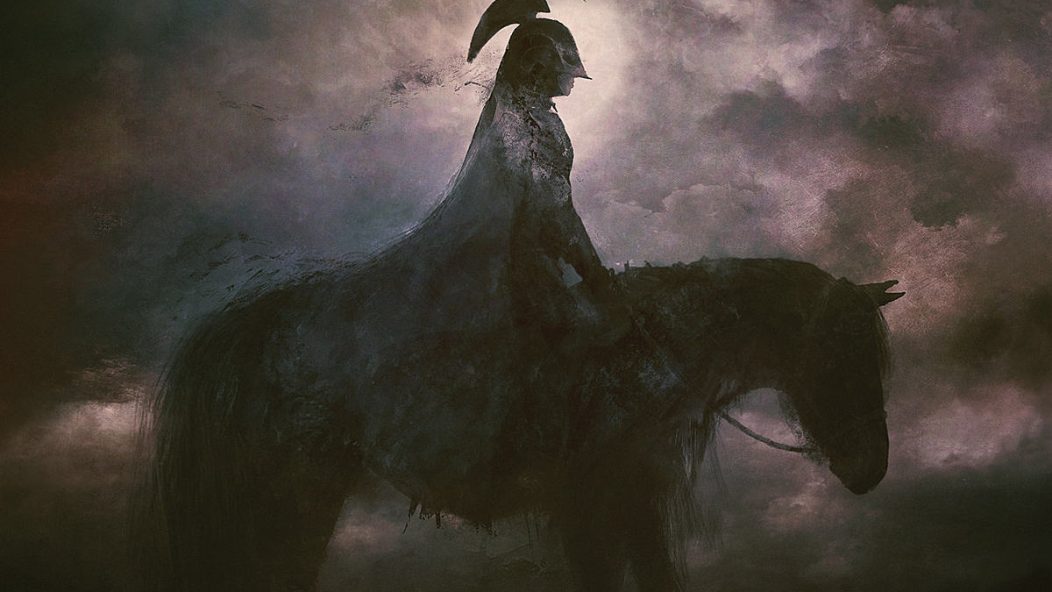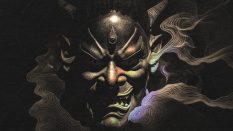
Piercing the Veil #9: Ars Moriendi's History-Rich Black Metal Embraces the Obscure
Metal artists routinely draw upon history in the service of spectacle. Most metalheads are nerds about something, and their love for their muses, historical or otherwise, is contagious. Nobody would sing about, for example, the Charge of the Light Brigade if they weren’t utterly fascinated by it. Their adoration instills emotional transference wherein one becomes enamored with Cthulhu, let’s say, if only because their favorite band makes Cthulhu cool.
Taking that into account, Ars Moriendi’s third album Sepelitur alleluia turns arcane history vogue. It retells the story of the bloodthirsty French pirate François l’Olonnais and his eventual demise at the jaws of a cannibalistic tribe. It’s overly dramatic as hell, an attribute which Ars Moriendi further embellished on their 2021 record Le silence déraisonnable du ciel. The Arsonist is the sole member of the French outfit and graciously spoke with us about how his love of obscure French history, family musical lineage, and film tastes play into his craft.
…
…
The Arsonist established Ars Moriendi in the early 2000s as an instrumental dungeon synth side project to his then-current band Solipsis. After that group’s dissolution, he focused on Ars Moriendi, evolving first by adding elements like vocals, horns, and a heavier black metal emphasis, then by refining his songwriting process. He states, “I now spend a lot more time on my compositions than when I was doing demos (2001-2007) when I was recording a lot. I pay much more attention to the details now, the sequences, the overall structure, the arrangements… It seems to me to be a logical evolution for a musician, we are becoming more and more demanding and those who listen are also more and more demanding.”
His latest album Le silence déraisonnable du ciel is a lofty drama that combines black metal, ambient, spoken word, electronic, jazz, and trip-hop. Given Ars Moriendi’s historical basis, their sonic palette can appear perplexing. The Arsonist even questions how his musical and historical interests interact. “I often ask myself… Is it relevant to add an electronic effect in this song about the life of monks in a monastery during the XVth century? The answer is just a question of feeling. Do I find it good? Does the electro effect harm the historic atmosphere that I want? If my own answer is ‘no’ then I can use it.”
These stylish attributes match his subjects’ bombastic natures. Besides pirates and cannibals, Ars Moriendi also writes about the dark history of choirboys in Northern France during the 16th century (The Arsonist devoted his university thesis to this topic), Charles Baudelaire’s modernist drinking endorsement “Enivrez-vous,” and the life of 15th-century friar Girolamo Savonarola. He combs through history’s deep cuts. Debauchery and religiosity run hand in hand, gallivanting through pastures less about rigid form and more about narrative.
Perhaps the most telling insight into Ars Moriendi’s craft is his fascination with Mamoru Oshii. The Japanese director is notable for challenging conventional storytelling practices. His approach can be summed up by the mantra that his style is the substance, preferring world-building and thematic resonance over plot. Oshii plays it fast and loose with his source material. He repurposes characters into metaphors, transforming them into sentient questions that conflict with his assembled worlds. Watch the philosophical Ghost in the Shell (which you should have by now) or the unpredictable Urusei Yatsura 2: Beautiful Dreamer (which is much better than Inception) for reference.
Oshii’s influence bleeds into Ars Moriendi’s music. The Arsonist admits to directly lifting from Oshii. “I remember having used samples taken from Avalon on one of Ars Moriendi’s first demos and having repeatedly evoked philosophical questions (for example on the album Du tréfonds d’un être and the track “Ghost”).” He then adds, “I was very impressed by the film Avalon, by the two Ghost in The Shell films, and his way of filming, of bringing us back through his long sequence shots into the feelings of his characters—their loneliness, their nostalgia, their metaphysical questioning.”
The director’s touch permeates the band’s pacing. Ars Moriendi adopts an approach similar to Oshii’s wherein characters and moods are instruments in dynamic sagas, propelling them through multiple phases, traversing disparate genres, and leaping between points like a lucid dreamer.
The Arsonist’s earlier comments about listener demand beget a question; if people demand more from music, who exactly is demanding raspy black metal with regal flourishes that’d make the Knights of the Round Table blush? It’s a niche market and Ars Moriendi don’t capitulate to a wider audience. The Arsonist favors epics like “Un néant à l’égard de l’infini” or Sepelitur alleluia’s “Ecce homo.” Each has an idiosyncratic aspect, like the former’s trip-hop segues or the latter’s brass interlude, emanating from The Arsonist’s upbringing and academic interests. He speaks on the intersection between jazz and his family. “About the jazz influence: it’s a little bit different, the origin is rather family since my father is a trumpet player and passionate about jazz and jazz-rock. He also participated, with his saxophonist brother, in several recordings, on the albums Sepelitur alleluia and on La Solitude du pieux Scélérat.”
However, Ars Moriendi’s peculiarity wills an audience into existence. It may feel like you need a bachelor’s degree in French history to fully grasp the relevance of, for example, The Sabat Mater of Giovanni Battista Pergolesi. It could be a potential entry barrier for some regarding Ars Moriendi. It’s not a deal-breaker so much as it is a call to action. The Arsonist’s opulent music begs to be investigated. It promotes curiosity about opaque subjects in a fashion that nobody could envision but strikes an apparent chord after the fact. The Arsonist’s inquisitiveness binds the pieces together. As he puts it, “I would be tempted to answer that the subject that connects the whole thing is me; my questioning about life, human beings and all that surrounds us and that I approach directly or through characters with a tragic destiny.”
…
Le silence déraisonnable du ciel released September 24th, 2021 via Archaic Sound.











